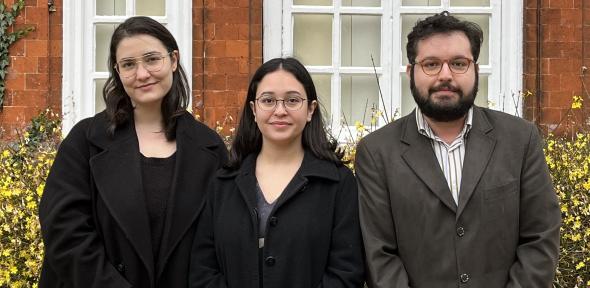
Up to 13 self-driving shuttle buses will be trialled for a year on Cambridge roads from early 2024, following an announcement of new joint government and industry support for self-driving transport technology.
The Cambridge Connector project is being led by the Greater Cambridge Partnership with support from Cambridgeshire County Council’s digital connectivity programme Connecting Cambridgeshire.
It will test an on-demand self-driving shuttle service around Cambridge University’s West Cambridge Innovation District, and the Cambridge Biomedical Campus, to integrate with existing transport services already available in the city. The vehicles will initially have a safety driver on board as backup, but will eventually operate without one, being monitored remotely instead. The government has awarded £8.7 million to the project, matched by industry to a total £17.4 million.
The project is one of seven from around the UK to receive a grant as part of the Centre for Connected and Autonomous Vehicles Connected and Automated Mobility programme, which aims to help British companies seize early opportunities to develop experimental projects into offerings ready for the market.
The Cambridge Connector project follows the previous but separate Greater Cambridge Partnership trial of autonomous vehicle technology on the West Cambridge Innovation District in 2021.
Professor Ian Leslie, Senior Adviser to the Vice-Chancellor with special responsibility for Environmental Sustainability, said: “Innovation that benefits society is at the heart of the University’s mission, and we are delighted to support the next phase of fully autonomous vehicle trials at the West Cambridge Innovation District. We believe shuttles could provide a real benefit for staff, students and visitors, and make journey times quicker between our sites and around our sites.
“By making sustainable travel easier, we hope more people will move away from using private vehicles in Cambridge, contributing towards Cambridge’s vision for the future.”
Cllr Elisa Meschini, Chair of the Greater Cambridge Partnership’s Executive Board, said: “Cambridge is renowned as a place of innovation, where the technology of the future is discovered and realised to benefit the world. This is why it is incredibly exciting to be part of today’s announcement to help develop a new public transport system.
“In the last two years we have trialled autonomous vehicles and now these innovative self-driving vehicles are the next step to demonstrate how on-demand services will be part of the future for Greater Cambridge.”
Business Secretary Grant Shapps said: “In just a few years’ time, the business of self-driving vehicles could add tens of billions to our economy and create tens of thousands of jobs across the UK. This is a massive opportunity to drive forward our priority to grow the economy, which we are determined to seize.”
Image shows inside of one of the autonomous vehicles trialled on the West Cambridge Innovation District in 2021
Autonomous vehicles will carry passengers around the West Cambridge Innovation District as part of a new sustainable transport pilot scheme supported by the University of Cambridge.

The text in this work is licensed under a Creative Commons Attribution 4.0 International License. Images, including our videos, are Copyright ©University of Cambridge and licensors/contributors as identified. All rights reserved. We make our image and video content available in a number of ways – as here, on our main website under its Terms and conditions, and on a range of channels including social media that permit your use and sharing of our content under their respective Terms.
























